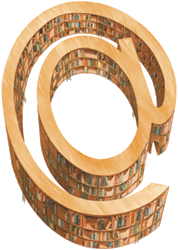SBN Index monitoring and statistics
In order to ensure the high quality and accuracy of the data held in the Index – a collective catalogue augmented by online shared cataloguing and batch dumping - regular maintenance and monitoring activities are needed; it was therefore deemed essential to endow it with instruments for recording the activities carried out by the hubs and monitoring the quality and quantity of the data held. To this end, through the production of statistical reports, performance management and monitoring functions were developed, along with functions aimed at augmenting the database and also finding duplicates and any possible data squaring. At present, the Index holds, in a single integrated database, records related to Ancient Book, Modern Book, the former Music Bibliographic Database (printed music and music manuscripts) and is arranged to manage other types of materials such as maps and graphic art material.
SBN Index statistics are obtained through an ad hoc interface that can be queried online; almost all existing statistics can be screened, also combining different filters together, varying according to the type of statistic.
The existing statistics are split into five different typologies:
- Statistics on data, split into recordings and lists. The former relate to the consistency of the database: amount of titles, authors, subjects, classes, locations, etc. in the SBN Index and which can be selected by bibliographic typology too; the latter makes it possible to extract lists of authors, classification symbols and titles related to books, music, graphic art and maps, which can be selected through specific channels
- Statistics on hub activities concerning both inclusive cataloguing (captures, creations, corrections distinguished by year, etc.) subdivided by hub, and cataloguing carried out in a single hub, subdivided by library; these statistics can also be searched by bibliographic typology. Futhermore, more statistics are provided relating to semantic cataloguing activities carried out within the Index (creations and captures of subjects and classes)
- Statistics on the system performance concerning average transaction response times, with the identification of shortcomings
- Statistics on duplicates, applying algorithms aimed at detecting the existing duplicates in the SBN Index author and title archives
- Statistics on squaring data also applying algorithms in order to detect squarings within the SBN Index author and title archives.
The reports produced by the first two kinds of statistics are available upon payment to peripheral users requesting them, in order to obtain information on data or on transactions carried outby their hub within its dialogue with the Index; this latter case is an attempt carried out at central level in order to meet the needs of those hubs whose local software doesn’t produce any statistical reports on their activities.
The third report typology is useful to IT technicians who monitor the system and its response capabilities.
The last two types of statistical reports are used to support archive clean-up activities carried out by expert users who are members of institutions taking part in the Index clean-up activities (The Structure). Through another interface (Direct Interface), Structure users can call up the files relating to the lists of duplicates and squarings produced by the statistical reports, and with the aid of centralized online procedures they can directly work within the Index to carry out the corrections needed, such as: merging titles, authors or subjects; changing the description of a title, an author, qualifications or standard numbers; changing title/title relationships or title/author relationships; shifting titles from one author or one subject to another; erasing authors, subjects, etc.
